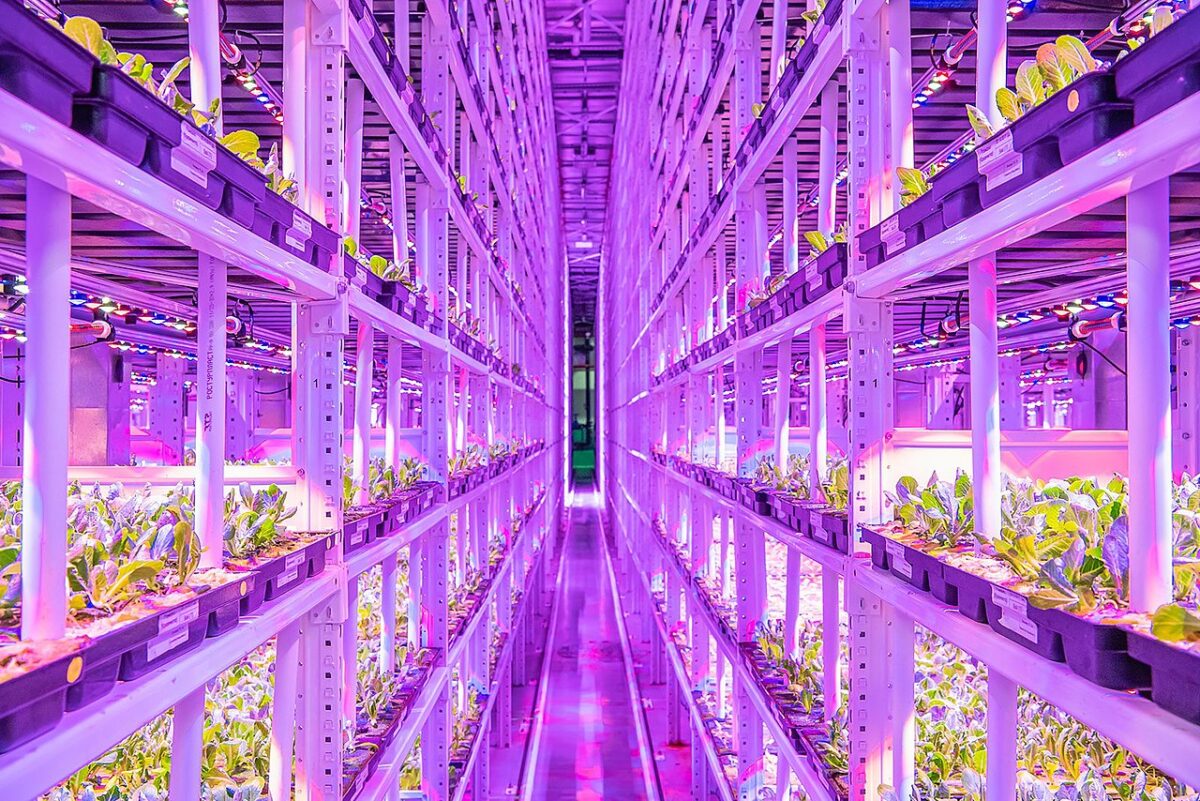Scientists at the Polytechnic University of Marche in Italy have proposed to combine vertical farming with solar power generation from PV greenhouses in an effort to increase land utilization.
They defined solar greenhouses as “closed agrivoltaics (CA),” which would be a form of agrivoltaic project in which power generation and food production are implemented in a protected environment.
“All common horticultural crops grow with none or limited yield losses when the percentage of the projection of the PV panels on the roof to the greenhouse area (PV cover ratio) is under 20%,” the researchers specified. “We propose an alternative approach to increase the agricultural sustainability of the CA with the experimental integration of the vertical farm (VF) technology, characterized by yields, light and resource use efficiency consistently higher than conventional greenhouses.”
They also emphasized that vertical farming utilizes use light-emitting diodes (LED) to achieve high photosynthetic use efficiency and year-round production in the plants, noting that PV is a perfect solution to reduce the impact of the LEDs' high energy consumption on project viability.
The Italian group sought to assess, in particular, the land productivity, the PV area, and the electricity required by an experimental VFCA system with a cover ratio of 100%. “The yield was quantified on green and red baby-leaf lettuce varieties, adopting four lighting treatments, expressed as Daily Light Integral (DLI) and compared to a control CA,” it explained.
They tested this approach on an experimental 40.48 kW VFCA located in the municipality of Villaperuccio, Sardinia, Italy. The system is operating since 2012 and is selling power to the grid at a feed-in tariff of €0.39 ($0.41) kWh. The shelves used for vertical farming each have a height of 40 cm and eight LED dimmable lamps that each have a nominal power of 22 W.
The greenhouse hosts four varieties of baby-leaf lettuce grown under four different lighting treatments.
Through their analysis, the academics found that the VFCA system is able to provide a 13% higher agricultural yield compared to a conventional CA system, with CO2 emissions dropping by over 12%.
pv magazine print edition
“The case study quantified the high land consumption of this reconversion, with a CA area from 5.4 to 13.9 times higher than the VF area to achieve the energy self-sufficiency and avoid the related CO2 emissions, meaning that only 7–18% of the CA area can be reconverted to vertical farming,” they highlighted.
Their findings were presented in the study “Increasing the agricultural sustainability of closed agrivoltaic systems with the integration of vertical farming: A case study on baby-leaf lettuce,” published in Applied Energy. “This study contributed to identify the main design features to reconvert the existing and underutilized CAs into sustainable and efficient mixed agrosystems,” the researchers concluded.
This content is protected by copyright and may not be reused. If you want to cooperate with us and would like to reuse some of our content, please contact: editors@pv-magazine.com.




1. Were there any insect or other pest problems inside the vertical greenhouse?
2. Did growing the baby leaf lettuce under led lighting change the nutrient/chemical profile of the lettuce in the different lighting treatments?
3. Which other crops do you think might be suitable for vertical cultivation with this technology?
I think this is a great idea!